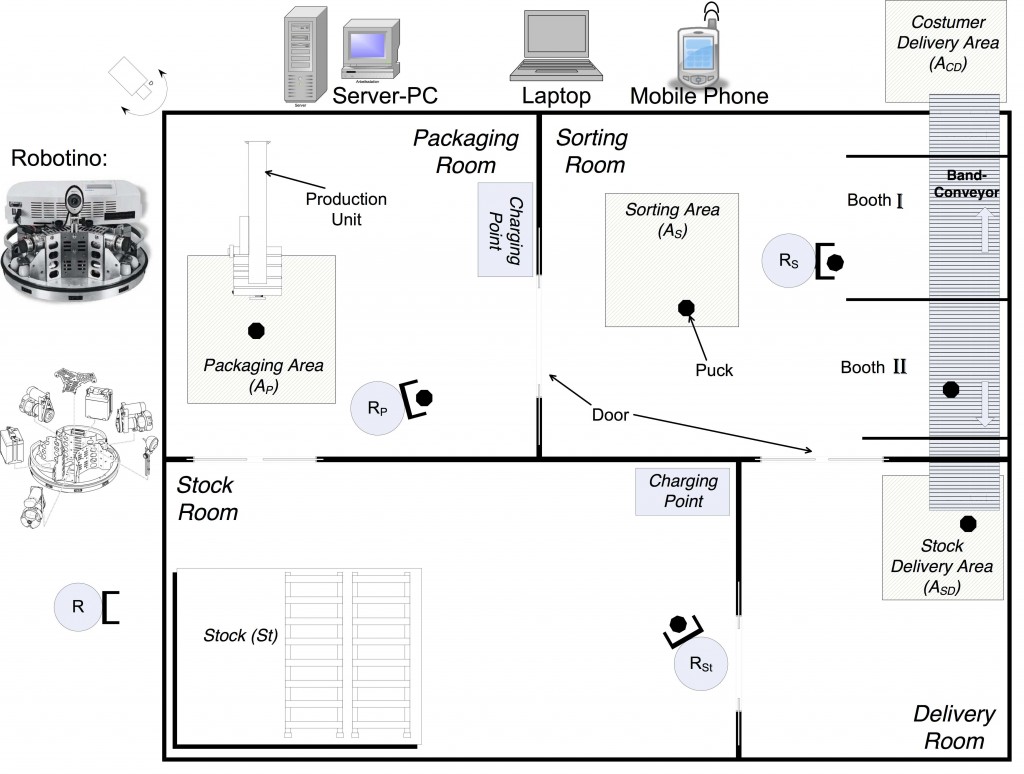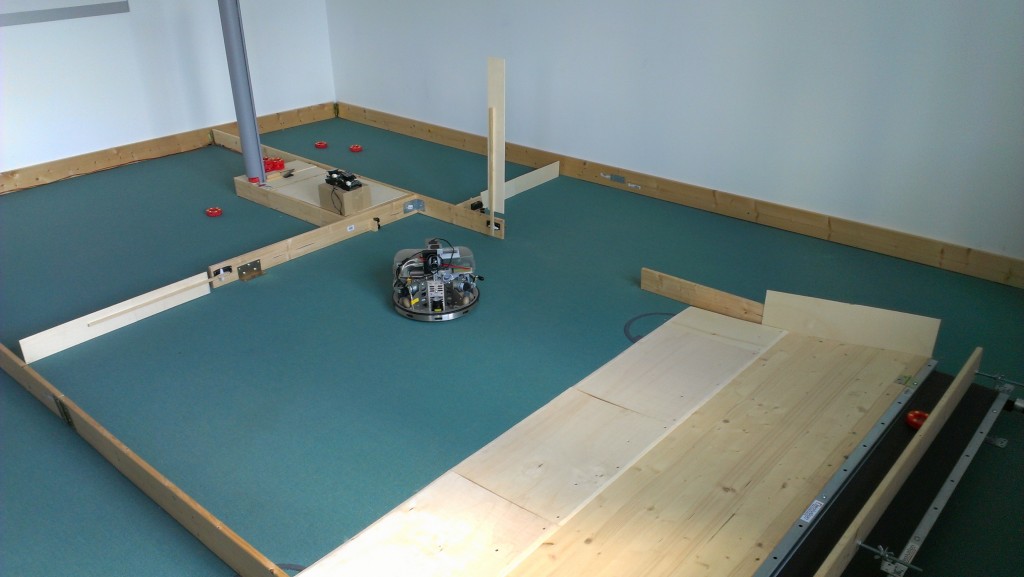We consider a robot system, where a single robot has the duty to transport pucks as advised by the overall factory automation. The regular behavior of the robot is to move around, transport pucks, or charge the batteries. The behavior has to ensure strict constraints, such as it excludes that the battery is exhausted and with a lower priority ensures to transport pucks as requested. It also must perform reasonable with respect to some soft goals to minimize energy consumption and maximize throughput.
The Figure above depicts a structural overview of the robot system. The whole simulation scenario is separated into four different rooms. In the first room, the pucks are packed and dropped for transportation in area AP . A robot RP transports the puck to a second room and drops it within the sorting area AS. On the basis of the current delivery status, the robot RS chooses one of the two booths and a band-conveyor transports the puck to the customer or stock delivery area (ACD,ASD) afterwards. In a third step, the robot RSt transfers the puck to stock in St. The doors can be opened or closed dynamically to vary the scenario. A robot can charge its battery at one of the two charging points. Each robot acts as an autonomous unit. Therefore, the tasks transportation, sorting and stocking are independent from each other.
Robotino Case Studies
For the evaluation of our research activities, we use our CPSLab robot laboratory consisting of three Robotino robots. The robots can be equipped with several sensors (e.g., laserscanner, infrared (IR) distancesensors, GPS like indoor navigation systems) as well as different actuators (e.g., servo motors, omnidirectional drive, gripper). The general idea of our evaluation scenario is the realization of a variable production setting, where robots are capable of transporting small pucks (representing goods in a production system) to different locations. Robots have to fulfill different requirement, e.g., they have to provide basic functionality like moving and avoiding obstacles in hard real-time (reacting on obstacles within a few milliseconds). Further, the robots have to reflect high level goals, e.g., energy saving of the battery, short routing to the destination points and optimizing the throughput while transporting the pucks. While basic functionalities, such as obstacle avoidance, have to be realized in hard real- time, we use existing libraries to realize higher functionalities such as path planning or creating a map by evaluating measured distance values. The latter can rarely be realized under hard real-time constraints because of insufficient libraries. Furthermore, we run a RTAI Linux operating system on the robot to enable hard real-time execution.
Other Case Studies
Concrete other examples for such a system are a bunch of autonomous robots that explore an unknown area in a burning building searching for injured people or a system of autonomous unmanned shuttle realizing a rail- transportation system where conveys are joined and left as required like in the case of the Neue-Bahntechnik-Project. Such systems have in common that the physical system, the embedded software and the coordination- mechanisms must ‘work together’ to achieve the overall desired goal. More extrem cases would be swarm like systems of systems where the information processing connects a huge number of individual elements that only together show the envisioned emergent behavior.




